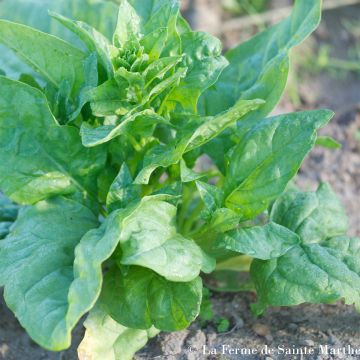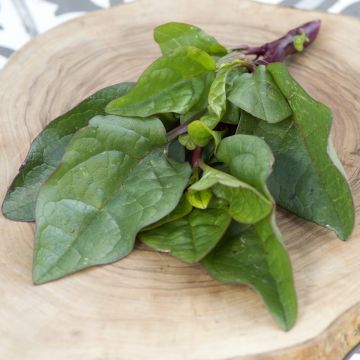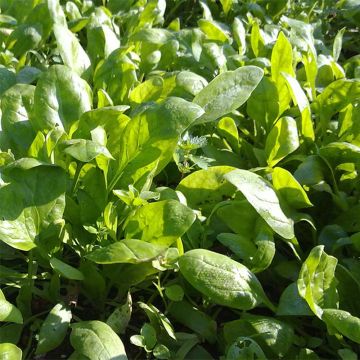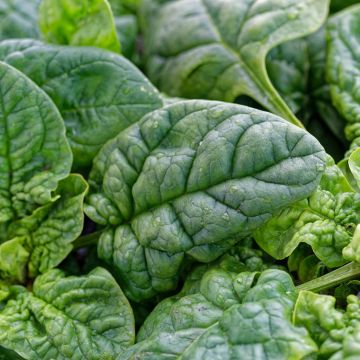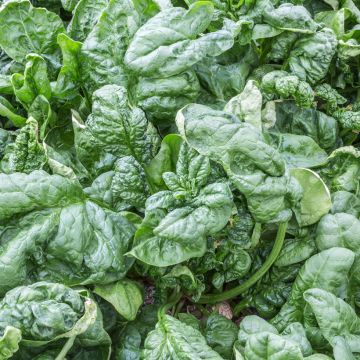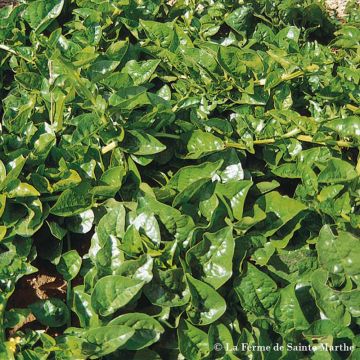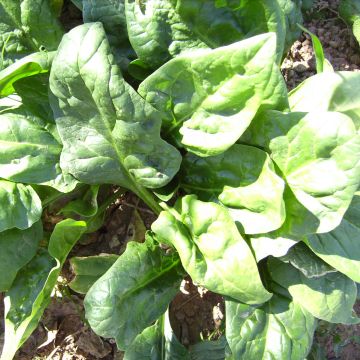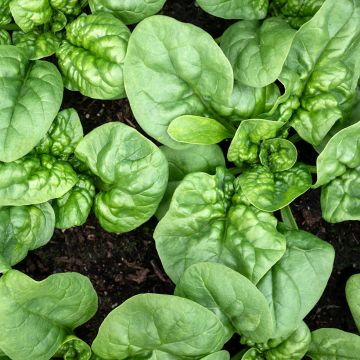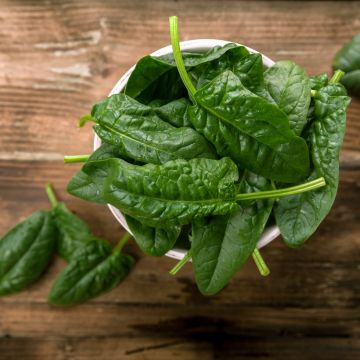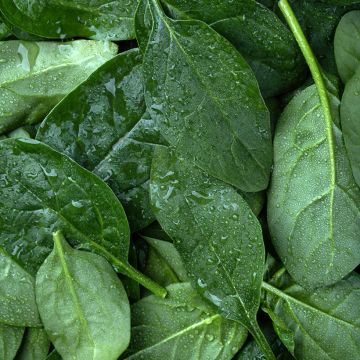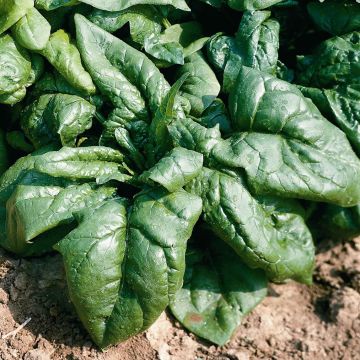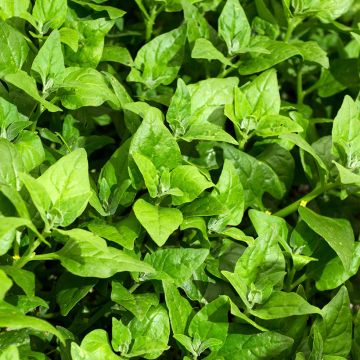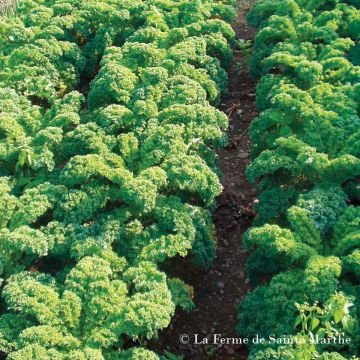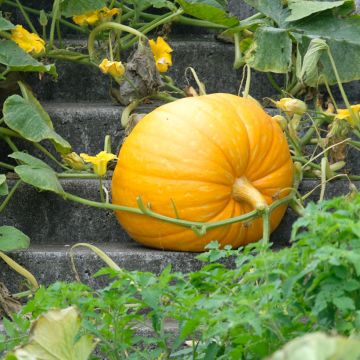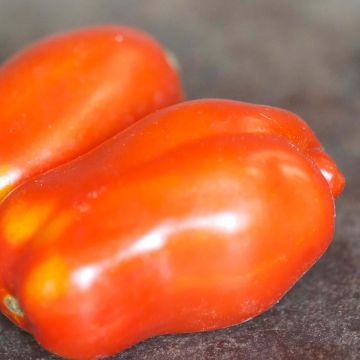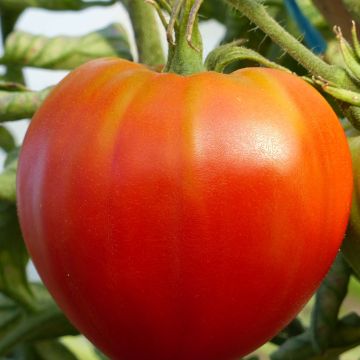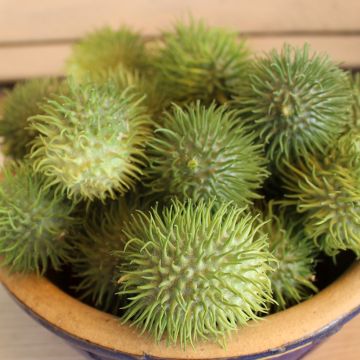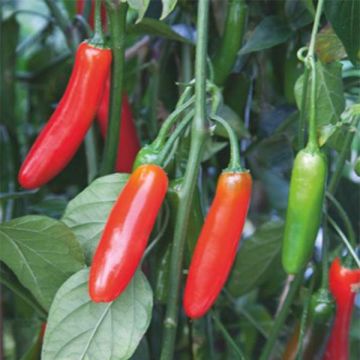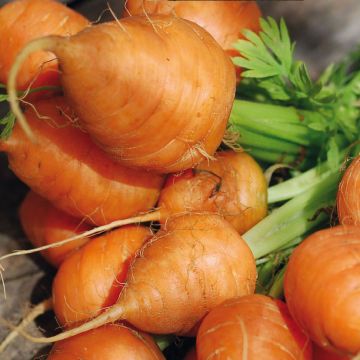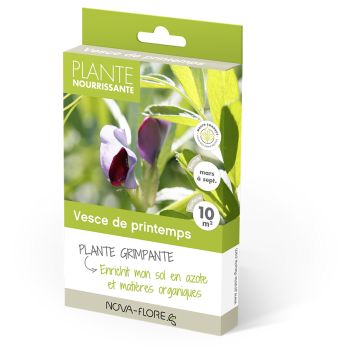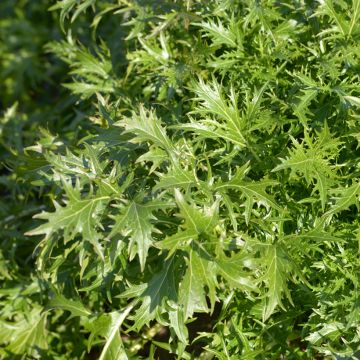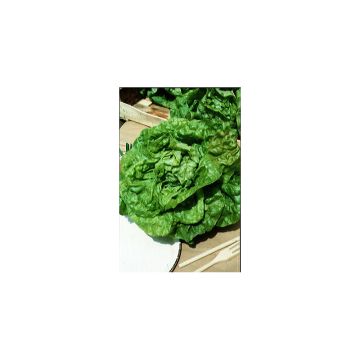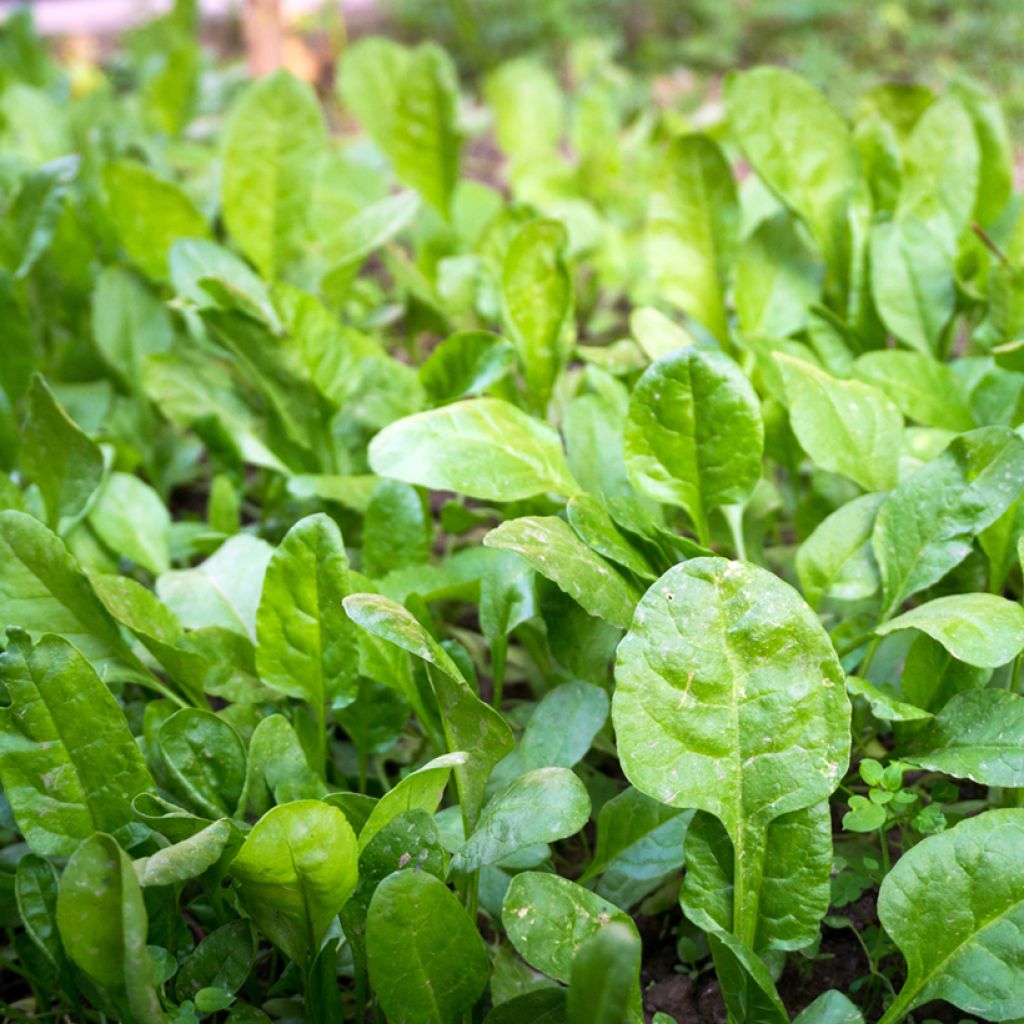

Spinach Apollo
Spinach Apollo
Spinachia oleracea Apollo
Epinard potager
Why not try an alternative variety in stock?
View all →This plant carries a 6 months recovery warranty
More information
We guarantee the quality of our plants for a full growing cycle, and will replace at our expense any plant that fails to recover under normal climatic and planting conditions.
Seed-only orders are dispatched by sealed envelope. The delivery charge for seed-only orders is €3.90.

Description
'Apollo' is an exceptional variety of spinach with excellent yields of thick, fleshy leaves. This mildew-resistant variety is best harvested as baby greens during hot spells, as it tends to bolt. Sow the seeds from March to June, and then from August to September. Harvest from May to October.
Spinach is a tasty leaf vegetable that is native to Iran. It belongs to the Amaranthaceae family, along with beetroot and chard. It is widely grown throughout the world for its unique flavour and excellent nutritional values. Its high iron content became famous with the cartoon character Popeye, although its high folic acid content (vitamin B9) is the most remarkable feature. Spinach leaves can be used in a thousand ways: raw in spring salads, in stir-fries, or in a savoury pie with small chunks of goat's cheese. Even kids won’t be able to resist it!
Spinach can be grown all year round. However, each variety has its own growing period that must be respected to avoid premature bolting. Depending on the time of year you wish to harvest your spinach, you can either choose between spring and/or autumn varieties, winter varieties, or even summer varieties. Some varieties have pungent seeds, which are best suited to spring or late autumn sowing.
Spinach gives best the results in consistent, moist and fertile soils with plenty of nitrogen and potash. It enjoys winter sun and mid-shade to full shade during the hotter summer months in warmer climates.
Harvesting: harvest the leaves as and when required. Pick the outer leaves without damaging the heart, as this will continue to grow and develop new leaves. When it shows signs of bolting, harvest the whole plant by cutting it off at ground level.
Storage: spinach tends to wilt very quickly once picked, even in the refrigerator. The leaves are best eaten fresh, as soon as possible after harvesting. They can, however, be blanched (3 minutes in boiling salty water) then frozen for later use.
Good to know: did you know that spinach can be used as a green manure? Recycle your old spinach seeds by sowing them during autumn (about 30 g/m²). The plants will absorb and store nitrogen from the soil, thus preventing it from leaching away over winter.
Report an error about the product description
Harvest
Plant habit
Foliage
Botanical data
Spinachia
oleracea
Apollo
Chenopodiaceae
Epinard potager
Cultivar or hybrid
Annual
Other Spinach seeds
Planting and care
Sowing
Spinach germinates at a temperature of around 16°C (60.8°F). Germination generally takes a fortnight.
Sow in open ground (one to two months before under a polytunnel for early varieties). It can grow in the sun, in partial shade, or in full shade, depending on your climate.
To avoid premature bolting, stick to the recommended growing period on the seed packet.
Sow the seeds in furrows in firm, slightly loosened soil, 25 to 30cm (10 to 12 in) apart, 1 to 2cm (1in) deep. Leave about 2cm (1in) between seeds. After germination, thin out the seedlings by keeping only the strongest one every 10 to 15cm (4 to 6in).
Stagger your sowing for longer harvests of fresh, tender leaves.
Care
Spinach is a fairly demanding vegetable, especially in terms of nitrogen and potassium. It requires well-rotted soil. It is wise to apply mature compost (about 3kg per m²) in autumn. Loosen the soil, and rake in the compost to a depth of 5cm (2in). An application of nitrogen fertiliser such as "blood and bone" is often welcome. It prefers neutral to slightly acidic soils (pH between 5.5 and 7).
Some varieties of spinach are quite susceptible to mildew, a fungal disease that occurs in mild and humid weather. Make sure not to sow too densely to keep the plants well-aerated. Crop rotation remains the best prevention.
As for companion planting, spinach is a good neighbour that does not harm any other vegetable. It is known to be beneficial for cauliflower, broccoli, potatoes, and radishes as it enhances their yield.
Seedlings
Care
Intended location
This item has not been reviewed yet - be the first to leave a review about it.
Vegetable seeds
Haven't found what you were looking for?
Hardiness is the lowest winter temperature a plant can endure without suffering serious damage or even dying. However, hardiness is affected by location (a sheltered area, such as a patio), protection (winter cover) and soil type (hardiness is improved by well-drained soil).

Photo Sharing Terms & Conditions
In order to encourage gardeners to interact and share their experiences, Promesse de fleurs offers various media enabling content to be uploaded onto its Site - in particular via the ‘Photo sharing’ module.
The User agrees to refrain from:
- Posting any content that is illegal, prejudicial, insulting, racist, inciteful to hatred, revisionist, contrary to public decency, that infringes on privacy or on the privacy rights of third parties, in particular the publicity rights of persons and goods, intellectual property rights, or the right to privacy.
- Submitting content on behalf of a third party;
- Impersonate the identity of a third party and/or publish any personal information about a third party;
In general, the User undertakes to refrain from any unethical behaviour.
All Content (in particular text, comments, files, images, photos, videos, creative works, etc.), which may be subject to property or intellectual property rights, image or other private rights, shall remain the property of the User, subject to the limited rights granted by the terms of the licence granted by Promesse de fleurs as stated below. Users are at liberty to publish or not to publish such Content on the Site, notably via the ‘Photo Sharing’ facility, and accept that this Content shall be made public and freely accessible, notably on the Internet.
Users further acknowledge, undertake to have ,and guarantee that they hold all necessary rights and permissions to publish such material on the Site, in particular with regard to the legislation in force pertaining to any privacy, property, intellectual property, image, or contractual rights, or rights of any other nature. By publishing such Content on the Site, Users acknowledge accepting full liability as publishers of the Content within the meaning of the law, and grant Promesse de fleurs, free of charge, an inclusive, worldwide licence for the said Content for the entire duration of its publication, including all reproduction, representation, up/downloading, displaying, performing, transmission, and storage rights.
Users also grant permission for their name to be linked to the Content and accept that this link may not always be made available.
By engaging in posting material, Users consent to their Content becoming automatically accessible on the Internet, in particular on other sites and/or blogs and/or web pages of the Promesse de fleurs site, including in particular social pages and the Promesse de fleurs catalogue.
Users may secure the removal of entrusted content free of charge by issuing a simple request via our contact form.
The flowering period indicated on our website applies to countries and regions located in USDA zone 8 (France, the United Kingdom, Ireland, the Netherlands, etc.)
It will vary according to where you live:
- In zones 9 to 10 (Italy, Spain, Greece, etc.), flowering will occur about 2 to 4 weeks earlier.
- In zones 6 to 7 (Germany, Poland, Slovenia, and lower mountainous regions), flowering will be delayed by 2 to 3 weeks.
- In zone 5 (Central Europe, Scandinavia), blooming will be delayed by 3 to 5 weeks.
In temperate climates, pruning of spring-flowering shrubs (forsythia, spireas, etc.) should be done just after flowering.
Pruning of summer-flowering shrubs (Indian Lilac, Perovskia, etc.) can be done in winter or spring.
In cold regions as well as with frost-sensitive plants, avoid pruning too early when severe frosts may still occur.
The planting period indicated on our website applies to countries and regions located in USDA zone 8 (France, United Kingdom, Ireland, Netherlands).
It will vary according to where you live:
- In Mediterranean zones (Marseille, Madrid, Milan, etc.), autumn and winter are the best planting periods.
- In continental zones (Strasbourg, Munich, Vienna, etc.), delay planting by 2 to 3 weeks in spring and bring it forward by 2 to 4 weeks in autumn.
- In mountainous regions (the Alps, Pyrenees, Carpathians, etc.), it is best to plant in late spring (May-June) or late summer (August-September).
The harvesting period indicated on our website applies to countries and regions in USDA zone 8 (France, England, Ireland, the Netherlands).
In colder areas (Scandinavia, Poland, Austria...) fruit and vegetable harvests are likely to be delayed by 3-4 weeks.
In warmer areas (Italy, Spain, Greece, etc.), harvesting will probably take place earlier, depending on weather conditions.
The sowing periods indicated on our website apply to countries and regions within USDA Zone 8 (France, UK, Ireland, Netherlands).
In colder areas (Scandinavia, Poland, Austria...), delay any outdoor sowing by 3-4 weeks, or sow under glass.
In warmer climes (Italy, Spain, Greece, etc.), bring outdoor sowing forward by a few weeks.

































